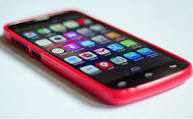Widgetized Section
Go to Admin » Appearance » Widgets » and move Gabfire Widget: Social into that MastheadOverlay zone
The Role of Mobile Apps in Public Administration of Disaster Relief
The views expressed are those of the author and do not necessarily reflect the views of ASPA as an organization.
By Adesanya Omoniyi ADEKOYA
April 22, 2016
The rising trend in the use of information and communication technology (ICT) cannot be ignored. The application and adaptation of ICT is also on the rise, with various innovations being launched on a regular basis.
One innovation in the field of ICT is the development of mobile apps—specialized software platforms designed and developed for specific purposes. ICT use is rapidly expanding across the world. In 2013, Cisco Visual Networking Index reported this technology has led the global mobile data traffic to double for the fourth consecutive year. Mobile development has surged in reaction to increased needs for instant and accurate information during emergencies.
Mobile apps are contributing immensely toward effective emergency management and public safety efforts. With a steady and rapid rise in the use of mobile phones across the world, the use of apps on mobile devices is also on the rise. These devices enable emergency management officials to manage disasters and mitigate public safety challenges.
Previous efforts to use mass media to communication about disaster management involved radio and television. However, as one can expect, the use of social media platforms and apps are now trending. Apps such as Whatsapp, IMO, Yahoo Messenger and MSN Messenger are commonly used and helpful in disseminating information during catastrophic events. For example, mobile apps are used to share meteorological information including news about rainfall, snowfall and other weather conditions.
In the event of security breaches, such as criminal and terrorist attacks, the public must be warned in order to minimize casualties. During emergencies, people fail to notice security codes and signs and most public address systems are not very effective. By using mobile apps, the public can be adequately informed and guided about such events, thereby reducing casualties.

Source: Google
Public information campaigns should emphasize the role mobile phones can play in helping recover from a disaster. For example, in the United States, both the Federal Communications Commission and the local operators have posted consumer advisories informing customers to charge their headset batteries ahead of an emergency, to have a backup battery, to keep their phones dry and to expect the network to be busy in the aftermath of an event such as a hurricane.
Although surveillance, public education and a range of news media (such as broadcast television, radio and the Internet) are generally the best way to prepare people for an impending disaster, mobile phones also play a supplementary role in early warning systems. While mobile phones are not an efficient way to broadcast information to large numbers of people, they can be a useful mechanism for individuals to relay such information on to friends and family who may have missed the initial broadcast. In many countries, there are low-tech, but effective, warning systems in place. For example, in the Caribbean, people are warned of approaching hurricanes via radio broadcasts, backed up by annual drills taught each year in schools.
In the immediate aftermath of a disaster, the contribution of mobile technology is substantial due to the speed in which cellular networks recover from damage. It is typically much easier to repair a wireless base station than hundreds of fixed-line connections. This was strikingly demonstrated in the speed of restoration of mobile services to customers in the Gulf region of the United States after Hurricane Katrina. New mobile networks can be set up relatively quickly in places where there was either no network to begin with or the original network was damaged.
Aid agencies are finding text messages and mobile calls are an increasingly important means of fundraising, giving them rapid access to funds donated by members of the public.
Overall, the use of mobile apps should be encouraged to enhance the public’s capacity to manage and control disaster.
Author: Adesanya Omoniyi ADEKOYA, an administrator, economist, business advisor, politician, development activist and doctoral student of Public Policy Analysis at Walden University, can be contacted via [email protected].



Follow Us!